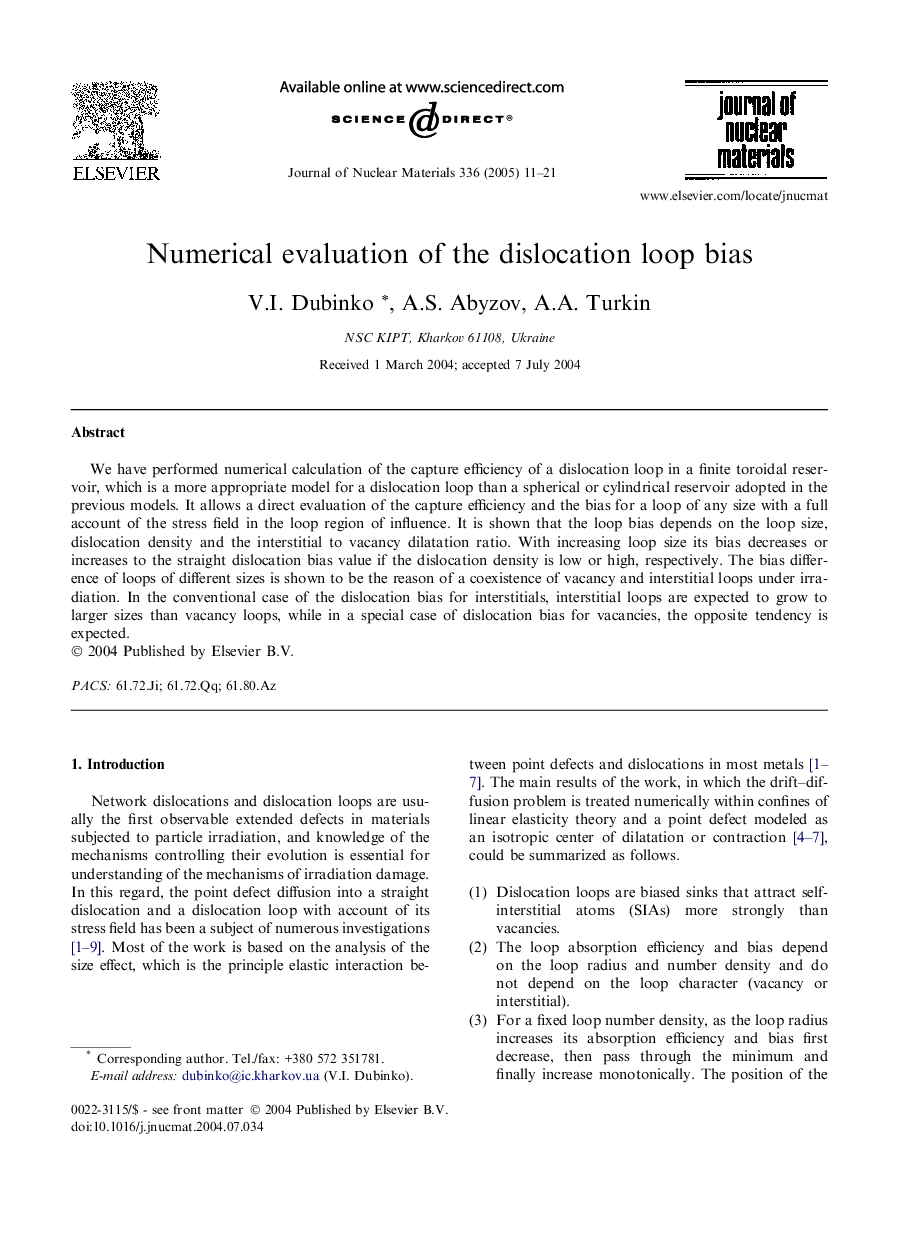| Article ID | Journal | Published Year | Pages | File Type |
|---|---|---|---|---|
| 10645319 | Journal of Nuclear Materials | 2005 | 11 Pages |
Abstract
We have performed numerical calculation of the capture efficiency of a dislocation loop in a finite toroidal reservoir, which is a more appropriate model for a dislocation loop than a spherical or cylindrical reservoir adopted in the previous models. It allows a direct evaluation of the capture efficiency and the bias for a loop of any size with a full account of the stress field in the loop region of influence. It is shown that the loop bias depends on the loop size, dislocation density and the interstitial to vacancy dilatation ratio. With increasing loop size its bias decreases or increases to the straight dislocation bias value if the dislocation density is low or high, respectively. The bias difference of loops of different sizes is shown to be the reason of a coexistence of vacancy and interstitial loops under irradiation. In the conventional case of the dislocation bias for interstitials, interstitial loops are expected to grow to larger sizes than vacancy loops, while in a special case of dislocation bias for vacancies, the opposite tendency is expected.
Related Topics
Physical Sciences and Engineering
Energy
Nuclear Energy and Engineering
Authors
V.I. Dubinko, A.S. Abyzov, A.A. Turkin,
